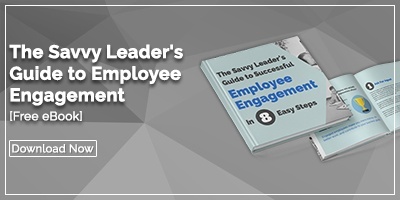 The start of a new year is a time of renewed hope and a sea of possibilities. Hopefully, you’ve had the chance to take a bit of a break over the holidays and are ready to kill it in 2020.
The start of a new year is a time of renewed hope and a sea of possibilities. Hopefully, you’ve had the chance to take a bit of a break over the holidays and are ready to kill it in 2020.
Many of us use the turn of the year as an opportunity to set some new goals, work on adopting more useful habits, and resolve to change what isn’t working. When it comes to your continuous improvement activities, there are a few simple changes you can make that will likely produce positive results. Here are a few that we can recommend.
Focus on Alignment
When we talk to leaders who are involved in improvement work, one common concern we hear is that improvement projects are getting completed. Still, the organization is no closer to reaching its most critical strategic goals. The work isn’t necessarily wasted, but it isn’t unified or consistent.
The best way to address this is to resolve to focus more on organizational alignment. That requires skill and process known as strategy deployment (Hoshin Kanri in Lean circles). Leaders set the most important objectives for the long-term (three to five years) and the current year. These goals are then broken down by functional area and cascaded down through the organization to each individual. This approach ensures that everyone knows how their work aligns with the greater strategy.
Each improvement project that is started can be vetted to make sure that it applies to one or more of the key objectives. This works especially well when software is used to complete an X-matrix.
One warning, it is pretty easy to start the year with well-aligned goals, but much more challenging to make sure they stay that way. Goal setting is never a one-and-done proposition, so schedule regular reviews and make alignment part of how you talk about improvement on a day-to-day basis.
Capture Tribal Knowledge
The lessons your team learns while managing improvement cycles or using other techniques such as rapid improvement events and Gemba walks is among the most valuable assets your organization has. Learning to improve how you improve is like asking the genie for more wishes. How well did you do in 2019 at capturing all of that knowledge?
If the answer is not outstanding, make this the year that every lesson is captured and made available for future review. The best way to do that is to manage all of your improvement projects in a software platform designed for that purpose. All documents, images, and other relevant artifacts should be easily attached to projects and searchable.
Carefully documenting each project is a way to ensure that vital knowledge and information aren’t lost when someone leaves the company or changes roles. It’s also beneficial when it comes to bringing new people on board or welcoming team members from other departments.
Enrich Onboarding
Speaking of bringing new people on board, 2020 is an excellent time to reevaluate how new employees are received into the organization. The first few weeks is when your new employees will start to understand the culture of your organization, learn how things are done, and begin to figure out how they fit. You want this period to be full of intention.
A few tips:
- Make sure that discussion of your improvement culture is part of the welcome process. This shouldn’t be a single conversation; it should be woven into all parts of the orientation.
- Keep in mind that new employees may never have been exposed to some of the improvement techniques and terms that are old-hat to your longer-term employees. Carve out time for this type of training.
- Arm your new employees with the tools they need to engage in improvement from the very beginning. Encourage them to submit any opportunities to improve the onboarding process.
Attend to Employee Development and Recognition
It is so easy when you are trying to meet deadlines, manage financial goals, and fight fires to neglect the human aspects of a successful business, but it’s a huge mistake. Why not set some measurable objectives for employee development and recognition in 2020?
Some employee development initiatives, like training, or attending conferences, require investment, but there are plenty of things you can do at low or no cost. The place to start is to have regular conversations with employees about their career progress and their vision for the future. There may be cross-functional projects that allow team members to learn about other parts of the organization and expand their skills. Employees with management aspirations may be asked to lead a Kaizen event or facilitate a PDSA cycle.
Hand in hand with development is recognition. It costs nothing to acknowledge employees who contribute to improvement work, and it’s especially easy if you have an improvement platform with broadcasting built-in. Everyone wants the great feeling that comes from being acknowledged for one’s contributions to a team.
Following through on New Year’s resolutions isn’t easy. (I’ll never know why every year, I think this is the year I’ll go to the gym every single day.) But in the case of your commitment to continuous improvement, these suggestions are achievable and will be well worth the effort.
Here’s to your success in 2020 and beyond!


Add a Comment